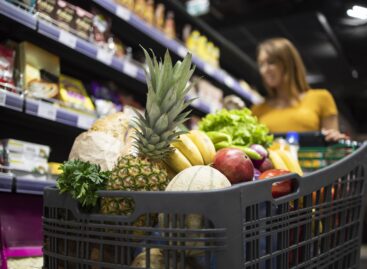The Nutri-score story: Everything you need to know about front-of-pack nutrition labels
It was 20 years ago that the first nutrition information graphic designs appeared on food products in Europe – on the side of the packaging where most people can’t avoid them (front-of-pack – FOP labels).
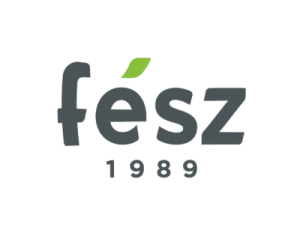

Guest author:
Réka Szöllősi
szakmai
és kommunikációs vezető
Felelős Élelmiszergyártók
Szövetsége
Then in 2011 the European Union adopted regulation on the provision of food information to consumers. At this time EU member states couldn’t agree on whether it was necessary to harmonise the various labelling schemes, e.g. the Nordic keyhole, the British traffic light or the GDA system that was backed by the food-industry.
From early 2017 large companies started developing an updated version of the traffic light nutrition label system. In the same year the French Minister for Health announced: based on the results of a large-scale consumer survey, France is introducing the so-called Nutri-score system for nutrition information indication, and the European Commission (EC) gave its blessing to this. What is more, the World Health Organisation (WHO) also declared its support and most national and international level consumer protection organisations followed suit.
What do EU member states think?
By spring 2020 the EC prepared a report analysing the situation and at the same time they also published the Farm to Fork (F2F) Strategy, in which the EC expresses its support for harmonising front-of-pack nutrition labelling practices and making the new scheme mandatory. Presently Belgium, the Netherlands, Spain, Luxemburg, Switzerland and Germany are using the Nutri-score system developed by the French, while Italy (and a few other EU member states) is against it and they even developed their own labelling system. The EC has given a green light to introducing this system too and it is an important factor that COPA-COGECA also backs the Italian system. In September 2020 Hungary announced its support for the Nutri-score system.

Current market and regulatory processes imply that front-of-pack labels may become the most important communications channel towards consumers
Possible developments in the EU
Basically the situation is the same as 10 years ago, EU member states need to find a common ground in three areas (and come to an agreement concerning these with the EC and the European Parliament as well): Is EU-level harmonisation necessary? If the answer is yes, which system(s) shall prevail? Should adopting the system be mandatory or voluntary?
In 2021 the EC is preparing an impact assessment study and by the end of 2022 it will prepare draft legislation. This means that the negotiations won’t start before 2023.
Meanwhile more and more member states are deciding to support the Nutri-score labelling system. In the light of this it is rather unlikely that member states will replace their existing practices with a new EU-recommended system, and it is also difficult to imagine that a labelling system, which is recommended by the member states and retailers are likely to adopt for their private label products, can remain truly voluntary. In France more than 80 percent of consumers are familiar with the Nutri-score labelling system for nutrition value. In Germany Aldi and Lidl have announced that they will use the system for their private label products.
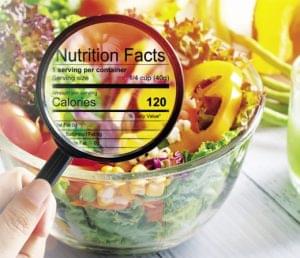
Egyes cégek fő lehetőségüknek a táplálkozástudományi elvárások teljesítését látják, mások a hagyományos ízek és az étrendi megközelítés védelmében elutasítják ezt a rendszert
Voluntary nutrition value labelling and the food industry
While some of the food industry firms support the French system and see an opportunity for meeting nutrition science expectations by adopting it, others would prefer staying out of it or reject it completely, saying they want to protect traditional flavours and dietary approaches by doing so. FoodDrinkEurope – the food industry confederation of the European Union – is in favour of EU-level harmonisation, but it doesn’t say which system should be adopted, because the organisation’s members have different opinions about this.
In Hungary the Federation of Responsible Food Manufacturers (FÉSZ) shares the view of FoodDrinkEurope, while the Hungarian Chamber of Agriculture (NAK) asked members in early February not to support the Nutri-score system – the labels of which can already be found on certain groceries in Hungarian shops too.
Conclusions
For food industry companies the conclusion can be that they need to pay special attention to what is happening in the field of nutrition value labelling in the next few years. Current market and regulatory trends indicate that FOP labels have the chance to become one of the most important forms of communicating innovation and product development work to consumers (even more so if smartphones become involved), especially if member states keep their promise and do their part in educating consumers about nutrition value and healthy diet. //
Nutri-score…
The Nutri-score system was created by the French health authorities and it is based on nutrient profiling. Its objective is to make it simpler – with the help of five letters and the related colours – for consumers to choose those food products which are healthier. Products are marked with a letter after calculating a score for the given product by using a special formula.
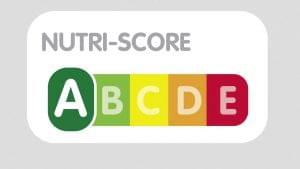
This formula takes into consideration both beneficial and detrimental dietary elements. The score is independent of the consumption quantity recommended by the product’s manufacturer, which means that it doesn’t refer to a portion or the quantity consumed, but to 100mg/ml – this way different products in the same product group can be compared quickly, which motivates for innovation. Those who criticise the Nutri-score labelling system say it doesn’t motivate for putting the principle of a healthy diet into practice, because it places groceries in ‘good food’ and ‘bad food’ categories. Critics say it simplifies the problem too much and can mislead consumer because of this. //
… vs. NutrInform
Italian nutrition labelling system NutrInform was developed as a reaction to the French one, with the interests of traditional food producers and the followers of a more classic diet in mind. This approach is more complex and basically it says any type of food group can be consumed, the main thing is not to eat more than recommended from any of them. Critics of this system say the contents of the label can’t really be understood ‘at a glance’ and it doesn’t facilitate comparing products, because the values don’t refer to 100g/ml but to the quantity recommended by the manufacturer. //
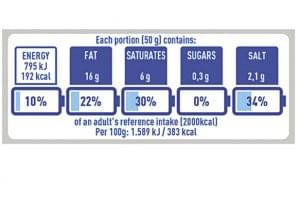
Related news
Ministry of Agriculture: Our country continues to stand for effective plant and animal protection
Brussels must not endanger the competitiveness of farmers in the…
Read more >The European Commission demands the abolition of margin squeeze
The European Commission has launched infringement proceedings against Hungary over…
Read more >Packaging changes color when food spoils – new invention could revolutionize the fight against food waste
Three young Spanish people, Pilar Granado, Pablo Sosa Domínguez and…
Read more >Related news
GKI analysis: Why do Hungarian households live more poorly than anyone else in the EU?
Imagine that the residents of every EU country shop in…
Read more >KSH: industrial producer prices decreased by 0.7 percent in May 2025 compared to the previous month, and increased by an average of 6.9 percent compared to a year earlier
In May 2025, industrial producer prices were 6.9 percent higher…
Read more >Consumption drives the economy
According to the latest forecast by the Balance Institute, the…
Read more >

